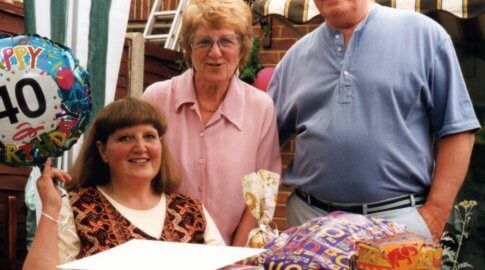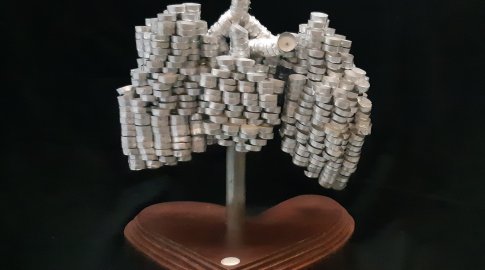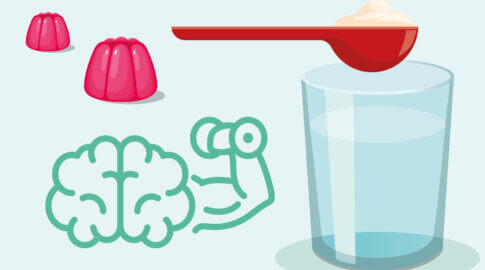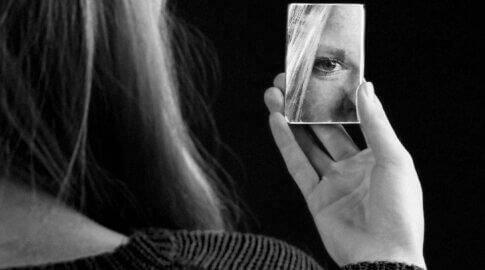VIDEO: Simple exercises to help you get fitter and stronger at home
You don’t need a gym, or even a pair of trainers, to start getting fitter and stronger with PH. In this special set of videos, Carol Keen and Trudi Scott, Specialist Physiotherapists in Pulmonary Hypertension, demonstrate simple exercises that can be completed at home.
“Even if you have PH, you can still exercise safely and benefit from exercise in ways that might allow you to do more or to have more energy left.
Even if you’re well and your disease is well-managed, you can still become fitter and it’s like an investment in the future. The better you can become now, the longer you’ll be able to stay active and independent going forward.
When you’re exercising it’s okay to get a little bit short of breath – that means that you’re benefiting from the exercise. As long as you can still have a conversation, even if it’s a bit broken, you’re exercising at the right level. If you find that you’re gasping or struggling to speak, you’re exercising too hard and that’s when you’d want to slow down or stop.
When you’re exercising it’s important to avoid lifting heavy weights, and if you feel dizzy or experience chest pain, you must stop.
The first type of exercise is getting fitter – making sure that your heart and lungs can work more efficiently. The second is about strengthening your muscles in your arms and legs. These activities can be completed by people of any ability and can be done in your own home at your own pace in comfortable surroundings.”
Sit to stand
“Sit to stand from a chair is a great exercise for strengthening your legs. Start off in an upright sitting position and push up through your legs. Repeat this exercise as many times as you can before you start to feel breathless and that will help increase the strength in your muscles.
To make the exercise more difficult, cross your arms over your chest and stand up from this position.“
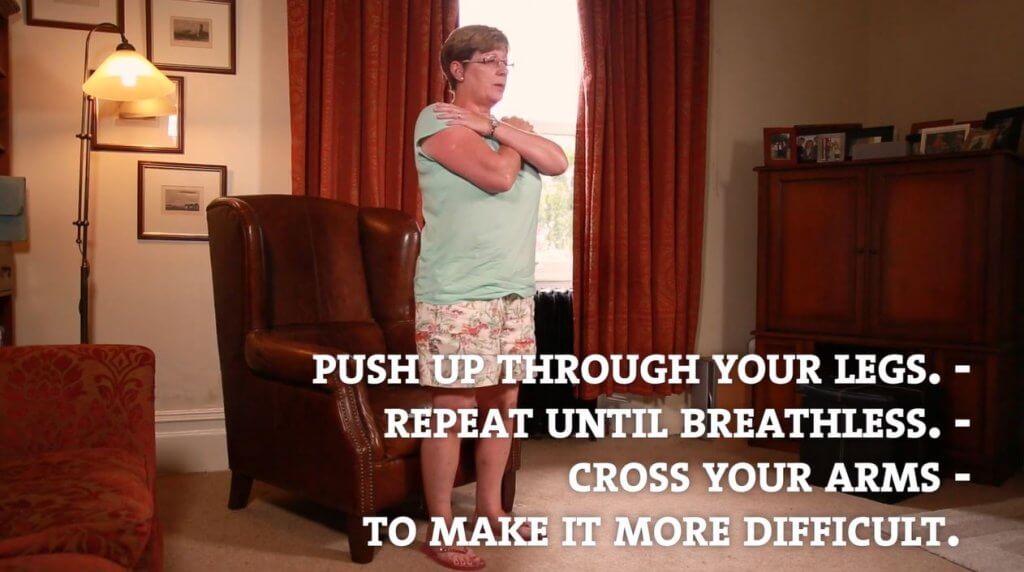
Arm strengthening part one
“This exercise can also be done at home and it helps strengthen the bicep muscles in your arms. It’s best done when standing, but if you’re unable to stand for long periods of time you can do it sat in the chair.
Make sure you sit upright at the edge of the seat with your shoulders relaxed. You can use any object around the house as weight such as cans of food or water bottles.
Starting with the object in your hand, straighten your elbow and bring it up towards your chest. Repeat this exercise as many times as you can in both hands. Try to breathe normally throughout and avoid holding your breath.“
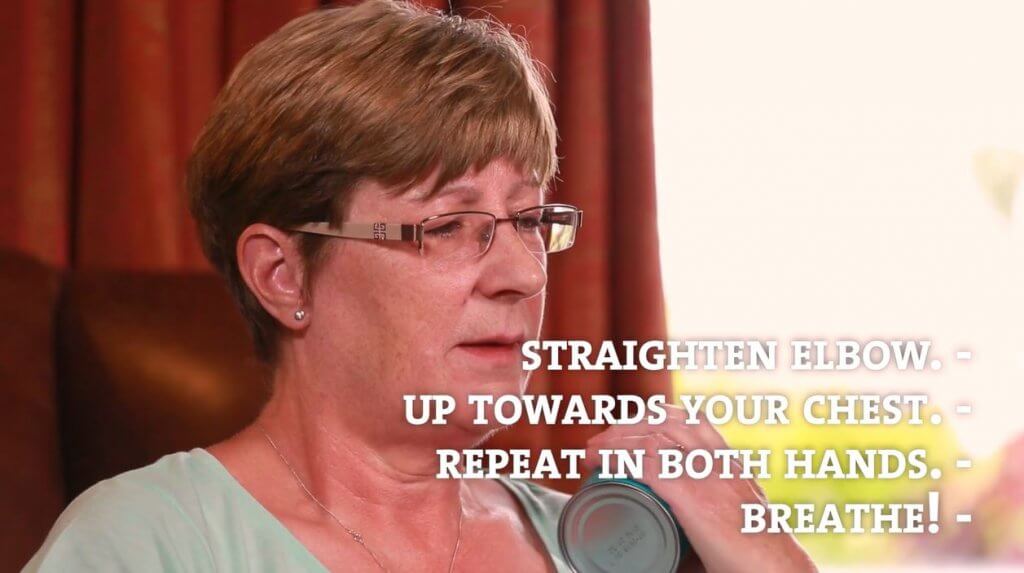
Arm strengthening part two
“These exercises are best done in an upright position but can also be done sat on the edge of a chair. They will help strengthen the muscles in your shoulder.
Start with your arm by your side and the object in your hand. Keeping your elbow straight, raise your arm to shoulder height before bringing it back down. This exercise can either be done by bringing your arm out in front of you or out to the side. Repeat this exercise as many times as you can on both arms and remember not to hold your breath as you’re doing it.

When completing the strengthening exercises, you may become limited by shortness of breath or aching muscles. Aim to do as many repetitions as you can but stop either when you become short of breath or your muscles become achy. It’s useful to keep a record of how many exercises you do each day so you can look at the progress you’ve made.“
Leg Strengthening
“These exercises help strengthen the muscles around your hips and can be done when standing. Find something in your house to hold onto, such as a mantelpiece, and make sure your feet are shoulder-length apart before starting.
The first exercise works the muscles in your bottom. From a standing position, keeping upright, bring your foot backwards, lifting it up off the floor. Try to keep the knee as straight as possible and avoid leaning forwards as you’re doing it. This may mean that you can only lift your foot up a small distance from the floor, but that’s okay.
The second part is bringing your leg out to the side, which works the muscles at the side of your hip. Start off with your feet shoulder-width apart and bring your foot out to the side, lifting it up off the floor. Make sure your toes are always pointing forwards and don’t lean to the side as you’re doing it, keeping a straight back.
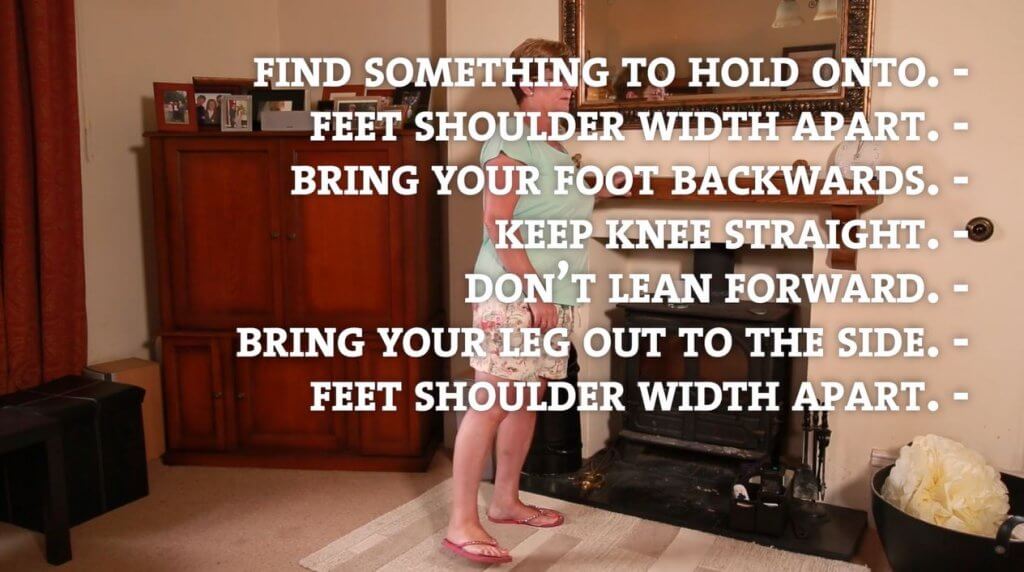
The third part is a mini squat. Again, make sure your back is straight and your knees should fall over your toes as you bend them, not inwards.
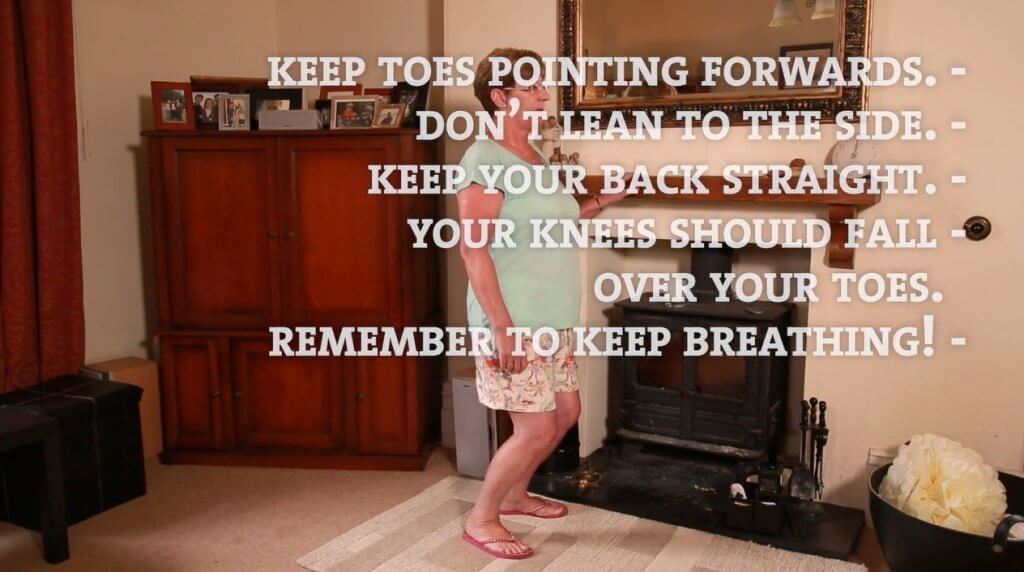
Remember to keep breathing throughout these exercises.“
Lifting legs
“This exercise help strengthen the muscles at the front of your thigh and is best done sitting upright on a chair.
Start off with your feet flat on the floor and your hands resting on your knees. Making sure that you remain upright, bring one leg out in front of you so that it’s straight, hold for three seconds, and bring it back down to the floor. When the leg is straight, make sure your toes are pulled up towards your stomach and don’t lean backwards. Repeat this as many times as you can on both legs.

Remember to breathe throughout the exercise – don’t hold your breath.“





